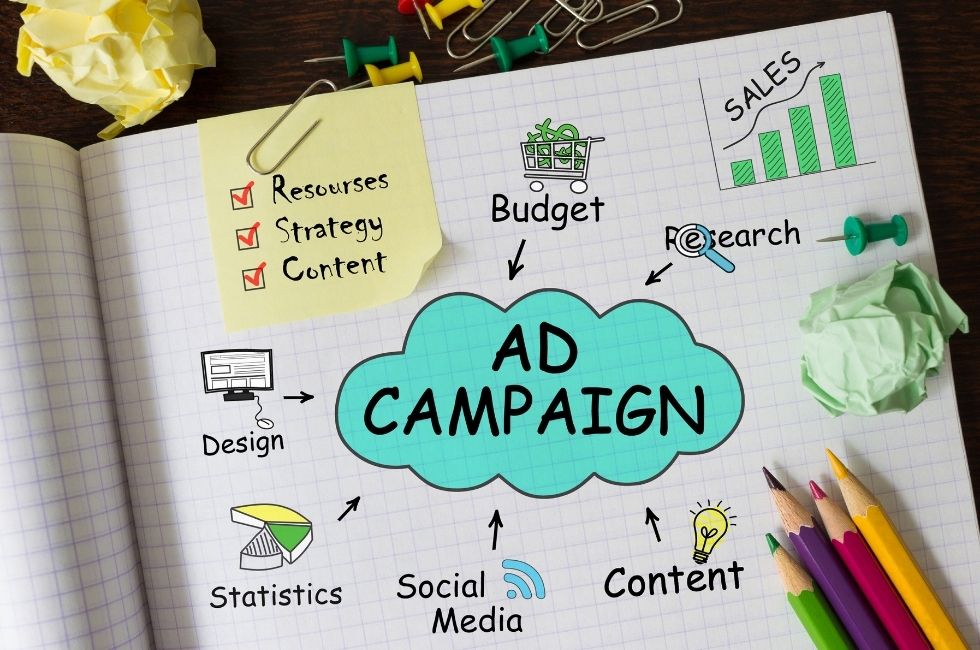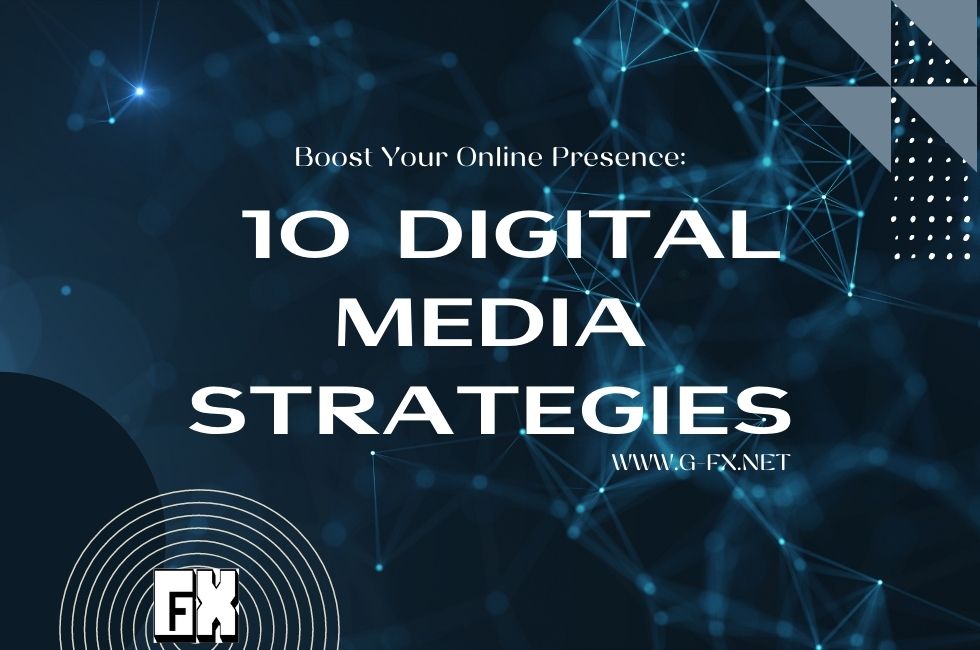Boost Online Presence
Hey there! I’m so excited to share with you some amazing tips and tricks to help you boost your online presence. As a professional digital marketer at g-fx.net, I’ve seen firsthand the power of digital media strategies.
In today’s world, having a strong online presence is crucial for success, whether you’re a business owner, blogger, or just someone looking to build your personal brand.
That’s why I’ve put together this guide of 10 proven ways to unleash the power of digital media and take your online presence to the next level. So, let’s dive in and get started!
1. Develop a Strong Brand Identity

When you think of your favorite brands, what comes to mind? Maybe it’s the iconic swoosh of Nike or the golden arches of McDonald’s. These brands have developed a strong identity that is instantly recognizable. But how do you create a brand identity for your own business?
First, you need to define your brand’s values and personality. What does your business stand for? What kind of tone do you want to use in your messaging? Once you have a clear understanding of your brand’s personality, you can start to develop visual elements that reflect it. This could include a logo, color scheme, and typography.
Your logo is the centerpiece of your brand identity. It should be simple, memorable, and unique. Think about the logos of some of your favorite brands. What makes them stand out? A good logo should be able to be recognized even without the name of the brand attached to it.
Your color scheme is also an important part of your brand identity. Different colors can evoke different emotions and associations. For example, blue is often associated with trust and reliability, while red can be seen as bold and exciting. Choose colors that reflect your brand’s personality and values.
Typography is another element that can help to reinforce your brand identity. Choose fonts that are easy to read and reflect your brand’s tone. For example, a playful brand might use a fun, whimsical font, while a more serious brand might use a clean, modern font.
Once you have developed your brand identity, it’s important to be consistent in using it across all of your marketing materials. This includes your website, social media profiles, business cards, and any other materials you use to promote your business. Consistency helps to build recognition and trust with your audience.
Developing a strong brand identity takes time and effort, but it’s worth it in the long run. A strong brand identity can help to differentiate your business from competitors and build a loyal customer base. So take the time to define your brand’s values and personality, and develop visual elements that reflect them. Your brand identity will be the foundation of all of your marketing efforts, so make sure it’s strong and consistent.
2. Create a Content Marketing Strategy

Create a content marketing strategy! This means planning out what kind of content you’ll create, who your target audience is, and how you’ll promote your content.
First, think about what kind of content your audience would be interested in. Are they looking for informative blog posts, entertaining videos, or helpful how-to guides? Once you’ve figured that out, start brainstorming ideas for content that will engage your audience and keep them coming back for more.
Next, identify your target audience. Who are you trying to reach with your content? Are they young adults, parents, or business professionals? Knowing your audience will help you tailor your content to their interests and needs.
Finally, think about how you’ll promote your content. Will you share it on social media, send it out in an email newsletter, or collaborate with other websites or influencers? Make sure you have a plan in place to get your content in front of as many people as possible.
Creating a content marketing strategy takes time and effort, but it’s worth it in the end. By providing valuable content to your audience, you’ll build trust and establish yourself as an authority in your industry. So get started today and watch your online presence grow!
3. Optimize Your Website for Search Engines

If you want your website to be found by people searching for what you offer, you need to optimize it for search engines. This means making sure your website has the right keywords, titles, and descriptions that match what people are searching for. You also need to make sure your website is easy to navigate and has good content that people will want to read.
One way to optimize your website is to use keywords. Keywords are the words or phrases that people use when they search for something online. For example, if you sell shoes, your keywords might include “shoes,” “footwear,” “sneakers,” and “boots.” You should use these keywords in your website’s titles, descriptions, and content. This will help search engines understand what your website is about and show it to people who are searching for those keywords.
Another way to optimize your website is to make sure it is easy to navigate. This means organizing your content into categories and using clear labels for your menus and links. You should also make sure your website loads quickly and is mobile-friendly. This will help people find what they are looking for quickly and easily, which will make them more likely to stay on your website and become customers.
Make sure your website has good content. This means writing articles, blog posts, and other content that people will want to read and share. You should also include images and videos that help illustrate your points and make your website more engaging. Good content will not only help your website rank higher in search engine results, but it will also help you build a loyal following of readers and customers.
Optimizing your website for search engines is essential if you want to be found by people searching for what you offer. By using keywords, making your website easy to navigate, and creating good content, you can improve your website’s visibility and attract more visitors. So, take the time to optimize your website today and start seeing the results you want!
4. Leverage Social Media Platforms

Social media platforms have become an essential part of our daily lives. From Facebook to Instagram, Twitter to TikTok, we are constantly connected to the world around us. But did you know that social media can also be a powerful tool for businesses? By leveraging these platforms, companies can reach a wider audience, engage with customers, and build brand awareness.
One of the most important things to keep in mind when using social media for business is to choose the right platform. Each platform has its own unique audience and features, so it’s important to do your research and figure out which ones will work best for your business. For example, if you’re targeting a younger audience, you might want to focus on platforms like TikTok or Snapchat. If you’re looking to connect with professionals, LinkedIn might be a better choice.
Once you’ve chosen your platforms, it’s time to start creating content. This can include anything from photos and videos to blog posts and infographics. The key is to create content that is engaging, informative, and relevant to your audience. You want to provide value to your followers and keep them coming back for more.
Another important aspect of social media is engagement. This means responding to comments and messages, liking and sharing other people’s content, and generally being an active member of the community. By engaging with your followers, you can build relationships and create a loyal fan base.
It’s important to track your results and adjust your strategy as needed. This means monitoring your analytics to see which posts are performing well, which platforms are driving the most traffic, and which tactics are working best. By constantly analyzing and tweaking your approach, you can ensure that you’re getting the most out of your social media efforts.
Social media can be a powerful tool for businesses of all sizes. By choosing the right platforms, creating engaging content, engaging with your followers, and tracking your results, you can build a strong online presence and connect with customers in a meaningful way. So why not give it a try? With a little time and effort, you could see some big results.
5. Use Email Marketing to Build Relationships

Email marketing is a great way to build relationships with your customers. It’s a way to keep in touch with them and let them know about new products or services that you offer. You can also use email marketing to offer special deals or discounts to your customers. This will make them feel special and appreciated, which will help to build a stronger relationship with them.
When you send out emails to your customers, make sure that they are personalized. Use their name in the subject line and in the body of the email. This will make them feel like you are talking directly to them and not just sending out a mass email to everyone on your list.
Another way to build relationships with your customers through email marketing is to ask for their feedback. You can send out surveys or ask for their opinions on new products or services that you are considering offering. This will show them that you value their input and that you are interested in what they have to say.
Make sure that your emails are visually appealing and easy to read. Use images and graphics to break up the text and make it more interesting. Also, make sure that your emails are mobile-friendly. Many people check their emails on their phones, so it’s important that your emails are easy to read on a small screen.
Make sure that you are consistent with your email marketing. Don’t send out emails too often or too infrequently. Find a schedule that works for you and stick to it. This will help to build trust with your customers and keep them engaged with your brand.
Email marketing is a great way to build relationships with your customers. By personalizing your emails, asking for feedback, making them visually appealing, and being consistent, you can create a strong bond with your customers that will keep them coming back for more. So, start building those relationships today and watch your business grow!
6. Invest in Paid Advertising

Have you ever wondered how some businesses seem to be everywhere you look? It’s not just a coincidence, they’re using paid advertising to get their message out there. Paid advertising is a way to promote your business through various channels such as social media, search engines, and websites. By investing in paid advertising, you can reach a larger audience and increase your chances of getting more customers.
One of the most popular forms of paid advertising is social media advertising. Platforms like Facebook, Instagram, and Twitter offer businesses the opportunity to create ads that target specific demographics, interests, and behaviors. This means that your ad will only be shown to people who are most likely to be interested in your product or service. Social media advertising is also relatively inexpensive compared to other forms of advertising, making it a great option for small businesses with limited budgets.
Another form of paid advertising is search engine advertising. This involves creating ads that appear at the top of search engine results pages when someone searches for a specific keyword. For example, if you own a bakery in New York City, you could create an ad that appears when someone searches for “bakery in NYC.” This type of advertising can be more expensive than social media advertising, but it can also be more effective in reaching people who are actively searching for what you offer.
You can also invest in website advertising. This involves placing ads on other websites that are relevant to your business. For example, if you sell pet products, you could place ads on websites that cater to pet owners. This type of advertising can be effective in reaching a specific audience, but it can also be more expensive than social media advertising.
Investing in paid advertising can be a great way to promote your business and reach a larger audience. Whether you choose social media advertising, search engine advertising, or website advertising, it’s important to create ads that are targeted and relevant to your audience. By doing so, you can increase your chances of getting more customers and growing your business.
7. Collaborate with Influencers and Partners

Working with influencers and partners can be a great way to expand your reach and connect with new audiences. Influencers are people who have a large following on social media or other platforms, and who can help promote your brand or product to their followers. Partners, on the other hand, are other businesses or organizations that you can work with to create joint marketing campaigns or promotions.
When collaborating with influencers, it’s important to find people who align with your brand values and target audience. You want to work with someone who has a genuine interest in your product or service, and who can create content that resonates with their followers. This might mean reaching out to influencers directly, or using a platform that connects brands with influencers in their niche.
Partnerships can also be a great way to reach new audiences and create buzz around your brand. You might partner with another business to offer a joint promotion or discount, or collaborate on a marketing campaign that highlights both of your products or services. This can be especially effective if you’re targeting a similar audience, or if you’re looking to expand into a new market.
When working with influencers and partners, it’s important to be clear about your goals and expectations. You should have a clear idea of what you want to achieve from the collaboration, whether that’s increased brand awareness, more sales, or something else. You should also be transparent about what you’re offering in exchange for their help, whether that’s payment, free products, or exposure to your own audience.
Ultimately, collaborating with influencers and partners can be a great way to grow your business and connect with new audiences. By finding the right people to work with, and being clear about your goals and expectations, you can create effective marketing campaigns that help you reach your business goals. So if you’re looking to expand your reach and connect with new customers, consider reaching out to influencers and partners in your niche.
8. Monitor and Analyze Your Metrics

Now that you’ve set up your website and started creating content, it’s important to monitor and analyze your metrics. Metrics are the numbers and data that show how your website is performing. By keeping track of your metrics, you can see what’s working well and what needs improvement.
One important metric to monitor is your website traffic. This tells you how many people are visiting your website and how long they’re staying. You can use tools like Google Analytics to track your website traffic. If you notice that your traffic is low, you may need to work on promoting your website more or creating more engaging content.
Another metric to keep an eye on is your bounce rate. This is the percentage of people who leave your website after only viewing one page. A high bounce rate could mean that your website isn’t user-friendly or that your content isn’t engaging enough.
You should also monitor your conversion rate. This is the percentage of people who take a desired action on your website, such as making a purchase or filling out a contact form. If your conversion rate is low, you may need to make changes to your website or your marketing strategy.
It’s important to analyze your social media metrics. This includes things like the number of followers you have, the engagement on your posts, and the click-through rate to your website. By analyzing your social media metrics, you can see which platforms are most effective for promoting your website and which types of content perform best.
Overall, monitoring and analyzing your metrics is essential for the success of your website. By paying attention to these numbers, you can make informed decisions about how to improve your website and attract more visitors.
9. Utilize Video Marketing

Video has become one of the most effective and engaging forms of content online. In fact, studies show that video is more likely to capture your audience’s attention and keep them engaged for longer periods than other types of content.
Incorporating video marketing into your digital media strategy can help you reach a wider audience, build brand awareness, and drive more conversions. Here are some tips for utilizing video marketing effectively:
- Start with a clear goal: Before creating any video content, it’s important to define your objectives. Are you trying to increase brand awareness, generate leads, or drive sales? Having a clear goal in mind will help you create targeted and effective videos.
- Tailor your content to your audience: Your video content should be designed to appeal to your target audience. Consider what kind of content your audience is interested in, what challenges they face, and how your product or service can help solve those challenges.
- Keep it short and engaging: Online attention spans are short, so it’s important to keep your videos short and engaging. Aim for videos that are no longer than 2-3 minutes, and use attention-grabbing visuals and storytelling to keep your audience interested.
- Optimize your videos for SEO: Just like other types of content, your videos should be optimized for search engines. Use relevant keywords in your video titles, descriptions, and tags to help your videos rank higher in search results.
- Promote your videos: Once you’ve created your videos, it’s important to promote them across all of your digital channels. Share them on social media, embed them in blog posts, and include them in email newsletters to maximize their reach.
By utilizing video marketing in your digital media strategy, you can create more engaging and effective content that resonates with your target audience and drives real results for your business.
10. Offer Interactive Content

Interactive content is a powerful way to engage your audience and provide a more personalized experience. By offering interactive content, such as quizzes, polls, and surveys, you can capture your audience’s attention, provide value, and gather valuable insights into their preferences and behaviors.
Here are some tips for offering interactive content in your digital media strategy:
- Identify the right type of interactive content: There are many types of interactive content to choose from, such as quizzes, polls, surveys, assessments, calculators, and more. Consider which type of content is best suited to your audience’s needs and preferences, and which will provide the most value for your business.
- Make it relevant and valuable: Your interactive content should be relevant and valuable to your audience. Offer content that helps them solve a problem or learn something new, and that aligns with your brand and messaging.
- Keep it simple and easy to use: Interactive content should be easy to use and understand. Keep your questions and instructions simple and clear, and make sure your content is optimized for mobile devices.
- Promote your interactive content: Once you’ve created your interactive content, promote it across all of your digital channels. Share it on social media, include it in blog posts, and feature it prominently on your website.
- Analyze your results: Interactive content can provide valuable insights into your audience’s preferences and behaviors. Analyze your results to gain a deeper understanding of your audience, and use that information to optimize your digital media strategy.
By offering interactive content in your digital media strategy, you can provide a more engaging and personalized experience for your audience, and gather valuable insights into their preferences and behaviors.
Conclusion
As we wrap up this article, it’s important to remember that the information we’ve shared is just the tip of the iceberg. There’s so much more to learn and explore when it comes to the topic at hand. We hope that what we’ve shared has sparked your curiosity and encouraged you to continue your own research. Remember, knowledge is power, and the more we know, the better equipped we are to make informed decisions and navigate the world around us. So keep asking questions, keep seeking answers, and never stop learning. We’re all in this together, and together, we can make a difference.




